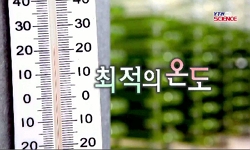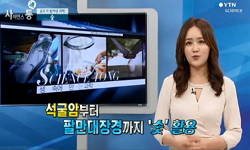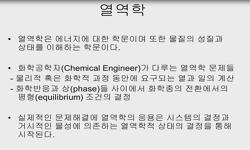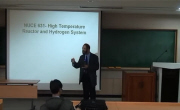본 연구는 역삼투공정에서 발생하는 농축수의 생물학적 처리에 관한 것으로, SBR공정의 처리성능 및 부하변동과 온 도변화에 따른 효율을 평가하였다. SBR공정의 cycle당 HRT가 각각 8시간과 12...
http://chineseinput.net/에서 pinyin(병음)방식으로 중국어를 변환할 수 있습니다.
변환된 중국어를 복사하여 사용하시면 됩니다.
- 中文 을 입력하시려면 zhongwen을 입력하시고 space를누르시면됩니다.
- 北京 을 입력하시려면 beijing을 입력하시고 space를 누르시면 됩니다.

RO 농축수 처리를 위한 SBR 공정 적용에 관한 연구 = A Study on Application of SBR Process for RO Retentate Treatment
한글로보기https://www.riss.kr/link?id=A102152710
- 저자
- 발행기관
- 학술지명
- 권호사항
-
발행연도
2012
-
작성언어
Korean
-
주제어
온도 ; 질소제거 ; Nitrogen Removal ; RO Retentate ; RO농축수 ; SBR Process ; SBR공정 ; Temperature
-
등재정보
KCI등재
-
자료형태
학술저널
- 발행기관 URL
-
수록면
79-85(7쪽)
-
KCI 피인용횟수
4
- 제공처
- 소장기관
-
0
상세조회 -
0
다운로드
부가정보
국문 초록 (Abstract)
본 연구는 역삼투공정에서 발생하는 농축수의 생물학적 처리에 관한 것으로, SBR공정의 처리성능 및 부하변동과 온 도변화에 따른 효율을 평가하였다. SBR공정의 cycle당 HRT가 각각 8시간과 12시간으로 2가지 형태로 공정운전이 이루어졌으 며, RO농축수의 낮은 C/N비 때문에 효과적인 탈질을 위해 메탄올을 주입하였다. 유량과 온도의 변화에도 SBR공정의 질소제 거 효율은 비교적 안정적인 것으로 나타났다. SBR공정의 최적 time cycle은 2 cycle/day이지만, 3 cycle/day 조건에서도 방류 수 TN 농도가 수질기준 이하로 나타났다. 평가결과 RO 농축수 처리를 위한 SBR공정의 적용은 효과적이었으며, 폐수처리장 설계에 활용이 가능할 것이다. SNR과 SDNR은 각각 0.043~0.066 kg NH₃-N/kg MLVSS·day와 0.096~0.287 kg NO₃ --N/kg MLVSS·day로 나타났다. 도출된 동역학적인자는 RO농축수 처리에서 포기조와 무산소조 설계에 적용이 가능할 것이다.
다국어 초록 (Multilingual Abstract)
In this study, Application of sequencing batch reactor (SBR) process for RO retentate treatment was performed. Efficiency of treatment by load and temperature variation was tested. The SBR process was operated two types as HRT per one cycle was 8 and ...
In this study, Application of sequencing batch reactor (SBR) process for RO retentate treatment was performed. Efficiency of treatment by load and temperature variation was tested. The SBR process was operated two types as HRT per one cycle was 8 and 12 hours, respectively. Methanol was injected for an effective denitrificaion owing to low C/N ratio of the RO retentate. TN removal efficiency of the SBR process was relatively stable at the change of flow-rate and temperature. The optimum time cycle of SBR process was 2 cycle/day for TN removal, and in the case of 3 cycle/day, the effluent TN concentration was found under the effluent quality standard. In the result of assessment, the application of SBR process for RO retentate treatment was effective and could be utilized to design for the wastewater treatment plant. The specific nitrification rate (SNR) and specific denitrification rate (SDNR) were 0.043~0.066 kg NH₃-N/kg MLVSS·day and 0.096-0.287 kg NO₃ --N/kg MLVSS·day, respectively. The derived kinetic could be applied for design to the aerobic and anoxic tank in the RO retentate treatment.
참고문헌 (Reference)
1 多田裕, "母乳中のダイオキシン類の実態調査と乳幼児の発達への影響に関する研究" 厚生労働科学研究費補助金 2009
2 "United Nations Environmental Program, “Persistent Organic Pollutants (POP)"
3 Froescheis, O., "The deep-sea as a final global sink of semivolatile persistent organic pollutants? Part 1. PCBs in surface and deep-sea dwelling fish of North and South Atlantic and the Monterey Bay Canyon (California)" 40 : 651-660, 2000
4 Glynn, A. W., "Serum concentrations of organochlorines in men: a search for markers of exposure" 263 : 197-208, 2000
5 Toft, G., "Review. Epidemiological evidence on reproductive effects of persistent organochlorines in humans" 19 : 5-6, 2004
6 Malisch, R., "Results of the WHOcoordinated exposure study on the levels of PCBs, PCDDs and PCDFs in human milk" 64 : 140-143, 2003
7 Gladen, B. C., "Pubertal growth and development and prenatal and lactational exposure to polychlorinated biphenyls and dichlorophenyl dichloroethene" 136 : 490-496, 2000
8 Aoki, Y., "Polychlorinated biphenyls, polychlorinated dibenzopdioxins, and polychlorinated dibenzofurans as endocrine disrupters what we have learned from Yusho disease" 86 : 2-11, 2001
9 Safe, S., "Polychlorinated biphenyls (PCBs): environmental impact, biochemical and toxic responses, and implications for risk assessment" 24 : 7-149, 1994
10 Needham, L. L., "Partition of environmental chemicals between maternal and fetal blood and tissues" 45 : 1121-1126, 2011
1 多田裕, "母乳中のダイオキシン類の実態調査と乳幼児の発達への影響に関する研究" 厚生労働科学研究費補助金 2009
2 "United Nations Environmental Program, “Persistent Organic Pollutants (POP)"
3 Froescheis, O., "The deep-sea as a final global sink of semivolatile persistent organic pollutants? Part 1. PCBs in surface and deep-sea dwelling fish of North and South Atlantic and the Monterey Bay Canyon (California)" 40 : 651-660, 2000
4 Glynn, A. W., "Serum concentrations of organochlorines in men: a search for markers of exposure" 263 : 197-208, 2000
5 Toft, G., "Review. Epidemiological evidence on reproductive effects of persistent organochlorines in humans" 19 : 5-6, 2004
6 Malisch, R., "Results of the WHOcoordinated exposure study on the levels of PCBs, PCDDs and PCDFs in human milk" 64 : 140-143, 2003
7 Gladen, B. C., "Pubertal growth and development and prenatal and lactational exposure to polychlorinated biphenyls and dichlorophenyl dichloroethene" 136 : 490-496, 2000
8 Aoki, Y., "Polychlorinated biphenyls, polychlorinated dibenzopdioxins, and polychlorinated dibenzofurans as endocrine disrupters what we have learned from Yusho disease" 86 : 2-11, 2001
9 Safe, S., "Polychlorinated biphenyls (PCBs): environmental impact, biochemical and toxic responses, and implications for risk assessment" 24 : 7-149, 1994
10 Needham, L. L., "Partition of environmental chemicals between maternal and fetal blood and tissues" 45 : 1121-1126, 2011
11 Dekoning, E. P., "PCB exposure in utero and via breast milk. A review. J. Exposure Anal" 10 : 285-293, 2000
12 Sipka, S., "Oral administration of PCBs induces proinflammatoη and prometastatic responses" 25 : 251-259, 2008
13 World Health Organization, "Levels of PCBs, PCDDs and PCDFs in Human Milk-Protocol for Second Round of Exposure Studies" WHO-Regional Office for Europe 1992
14 Centers for Disease Control and Prevention, "Laboratory Procedure Manual Method 28 for Second National Report on Human Exposure to Environmental Chemicals" 2003
15 Lorber, M., "Infant exposure to dioxin-like compounds in breast milk" 110 : A325-A332, 2002
16 Uehara, R., "Human milk survey for dioxins in the general population in Japan" 62 : 1135-1141, 2006
17 Oostdam, J. V., "Human health implications of environmental contaminants in Arctic Canada: A review" 230 : 1-82, 1999
18 Szyrwińska, K., "Exposure to specific polychlorinated biphenyls and som chlorinated pesticides via breast milk in Poland" 66 : 1895-1903, 2007
19 Walkowiak, J., "Environmental exposure to polychlorinated biphenyls and quality of the home environment: effects on psychodevelopment in early childhood" 358 : 1602-1607, 2001
20 Vreugdenhil, H. J. I., "Effects of perinatal exposure to PCBs and dioxins on play behavior in Dutch children at school age" 110 : A593-A598, 2002
21 Bimbaum, L. S., "Developmental toxicity of TCDD and related compounds: species sensitivities and differences, In Biological basis for risk assessment of dioxins and related compounds" Cold Spring Harbor Laboratory, Cold Spring Har-bor 51-68, 1991
22 Nakamura, T, "Determination of dioxins and polychlorinated biphenyls in breast milk, maternal blood and cord blood from residents of Tohoku, Japan" 394 : 39-51, 2008
23 Schecter, A., "Decrease in levels and body burden of dioxins, dibenzofurans, PCBs, DDE, and HCB in blood and milk in a mother nursing twins over a thirty-eight month period" 37 : 1807-1816, 1998
24 Yang, J. H., "Congener-distribution patterns and risk assessment of polychlorinated biphenyls, dibenzo-p-dioxins and dibenzofurans in Korean human milk" PERGAMON-ELSEVIER SCIENCE LTD 47 (47): 1087-1095, 2002
25 Longnecker, M. P., "Comparison of polychlorinated biphenyl levels across studies of human neurodevelopment" 111 : 65-70, 2003
26 Yua, Z., "Comparison of organochlrine compound concentrations in colostrum and mature milk" 66 : 1012-1018, 2007
27 US Environmental Protection Agency, "Chlorinated biphenyl congeners in water, soil, sediment and tissue by HRGC/ HRMS" 1668 : 1999
28 Solomon, G. M., "Chemical contaminants in breast milk: Time trends and regional variability" 110 : A339-A347, 2002
29 Norén, K., "Certain organochlorine and organobromine contaminants in Swedish human milk in perspective of past 20-30 years" 40 : 1111-1123, 2000
30 Venkatesha, V. A., "Catalase ameliorates polychlorinated biphenyl- induced cytotoxicity in nonmalignant human breast epithelial cells" 45 : 1094-1102, 2008
31 Ribas-Fitó, N., "Breast-feeding exposure to organochlorine compounds, and neurodevelopment in infants" 111 : e580-e585, 2003
32 Zoeller, R. T., "At the cutting edge. Environmental chemicals as thyroid hormone analogues: New studies indicate that thyroid hormone receptors are targets of industrial chemicals?" 242 : 10-15, 2005
33 통계청, "2010년 출생통계" 2011
34 보건복지부, "2005년도 국민건강․영양조사 제3기-영양조사부문(I)" 130-159, 2006
동일학술지(권/호) 다른 논문
-
- 大韓環境工學會
- 서창동(Chang Dong Seo)
- 2012
- KCI등재
-
- 大韓環境工學會
- 서주영(Ju Young Seo)
- 2012
- KCI등재
-
하천 수질정화를 위한 실험실 규모 다단식 토양여과 시스템에서 오염물질 제거에 미치는 운전인자의 영향
- 大韓環境工學會
- 원세연(Se Yeon Won)
- 2012
- KCI등재
-
지방산 분석에 의한 나토리 하천 대형 무척추동물인 Stenopsyche marmorata의 먹이원 평가
- 大韓環境工學會
- 신우석(Woo Seok Shin)
- 2012
- KCI등재
분석정보
인용정보 인용지수 설명보기
학술지 이력
| 연월일 | 이력구분 | 이력상세 | 등재구분 |
|---|---|---|---|
| 2027 | 평가예정 | 재인증평가 신청대상 (재인증) | |
| 2021-01-01 | 평가 | 등재학술지 유지 (재인증) |  |
| 2018-01-01 | 평가 | 등재학술지 선정 (계속평가) |  |
| 2017-12-01 | 평가 | 등재후보로 하락 (계속평가) |  |
| 2013-01-01 | 평가 | 등재 1차 FAIL (등재유지) |  |
| 2010-01-01 | 평가 | 등재학술지 유지 (등재유지) |  |
| 2008-01-01 | 평가 | 등재학술지 유지 (등재유지) |  |
| 2006-01-01 | 평가 | 등재학술지 유지 (등재유지) |  |
| 2004-01-01 | 평가 | 등재학술지 유지 (등재유지) |  |
| 2001-01-01 | 평가 | 등재학술지 선정 (등재후보2차) |  |
| 1998-07-01 | 평가 | 등재후보학술지 선정 (신규평가) |  |
학술지 인용정보
| 기준연도 | WOS-KCI 통합IF(2년) | KCIF(2년) | KCIF(3년) |
|---|---|---|---|
| 2016 | 0.52 | 0.52 | 0.45 |
| KCIF(4년) | KCIF(5년) | 중심성지수(3년) | 즉시성지수 |
| 0.43 | 0.42 | 0.604 | 0.13 |




 ScienceON
ScienceON DBpia
DBpia







